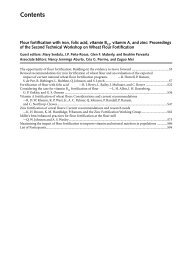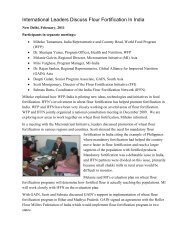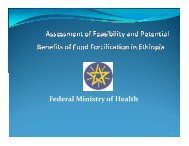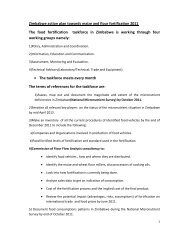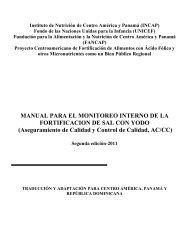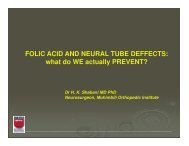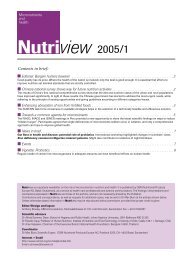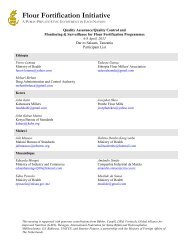ALINORM 99/23 (E) - CODEX Alimentarius
ALINORM 99/23 (E) - CODEX Alimentarius
ALINORM 99/23 (E) - CODEX Alimentarius
You also want an ePaper? Increase the reach of your titles
YUMPU automatically turns print PDFs into web optimized ePapers that Google loves.
<strong>ALINORM</strong> <strong>99</strong>/<strong>23</strong> Page 6HARMONIZATION OF REPORTING OF TEST RESULTS CORRECTED FOR RECOVERYFACTORS – PROGRESS REPORT ON DEVELOPMENT OF HARMONIZED GUIDELINESFOR THE USE OF RECOVERY FACTORS IN ANALYTICAL MEASUREMENTS(Agenda Item 6) 932. The Committee recalled that it had first considered the concept of recovery factors in analyticalwork at its 19th Session. At its last Session it had received a progress report on the development of theHarmonized Guidelines and agreed that it be kept informed of progress being made by IUPAC in thedevelopment of the Guidelines. It had also agreed that once the Guidelines were finalized by IUPAC,the Committee would consider whether or not to recommend the Guidelines for Codex purposes.33. The Delegation of the United Kingdom reported that the Harmonized Guidelines for the Use ofRecovery Information in Analytical Measurement had been finalized and would be published beforelong. The finalized text was essentially the same as that contained in the annex of CX/MAS 98/6 withsome editorial amendments. He explained that the issue was of concern due to differences from countryto country in the application, or otherwise, of correction of analytical results, which might lead to tradedisputes. For example, the corrected and uncorrected results of an analysis of the same sample couldindicate that the product analyzed was in conformity with the specification in one analysis report whilenot in conformity in the other.34. The Committee was generally of the view that there was disharmony in the use of recoveryfactors in the food analytical community and that it would be extremely difficult for it to reachconsensus. On the need for correcting analytical results, some delegations stated that results should becorrected unless there were specific reasons not to do so. However, some other delegations were of theopinion that results were not corrected normally unless it was required to do so. Examples ofuncorrected results were those of pesticide residue analyses and those obtained using Type I methods. Itwas stated that the conversion between corrected and uncorrected results was possible through the use ofcorrection factors and that the report of analysis should give necessary information on the correctionfactor(s). It was also stated that information on recovery should be included in the method description,thereby referring to the method in the report of analysis would clarify whether or not the result had beencorrected and provide for information necessary for conversion.35. The Committee decided to postpone further discussions pending the publication of theHarmonized Guidelines. It requested that the Guidelines, when published by IUPAC, be circulated toMember countries and that comments on the Guidelines be sought by way of a Codex Circular Letterwhich would include pertinent elements of CRD 8. The Committee would consider the publishedGuidelines and comments submitted on the Guidelines at its next Session to decide whether it would beappropriate to recommend the document for adoption by reference by the Commission for Codexpurposes.HARMONIZATION OF ANALYTICAL TERMINOLOGY IN ACCORDANCE WITHINTERNATIONAL STANDARDS – REPORT OF INTER-AGENCY MEETING ON “LIMITS”(Agenda Item 7) 1036. The Committee recalled that at its last Session it had decided to send the definitions of analyticalterms, not including those of “limit(s)”, to the Commission, which subsequently endorsed them. It hadfurther decided to request the Inter-Agency Meeting to recommend whether it would be appropriate toinclude “limits” in the selected terminology and to elaborate their definitions. A Codex Circular Letterhad been sent to Member countries and international organizations requesting comments on theinclusion of the definitions of “limits” in the list of terminology, to which only few responses had beenreceived.910CX/MAS 98/6, CRD 8 (comments from USA); CRD 14 (comments from Argentina).CRD 1 (Report of the Inter-Agency Meeting on Measurement Limits)




